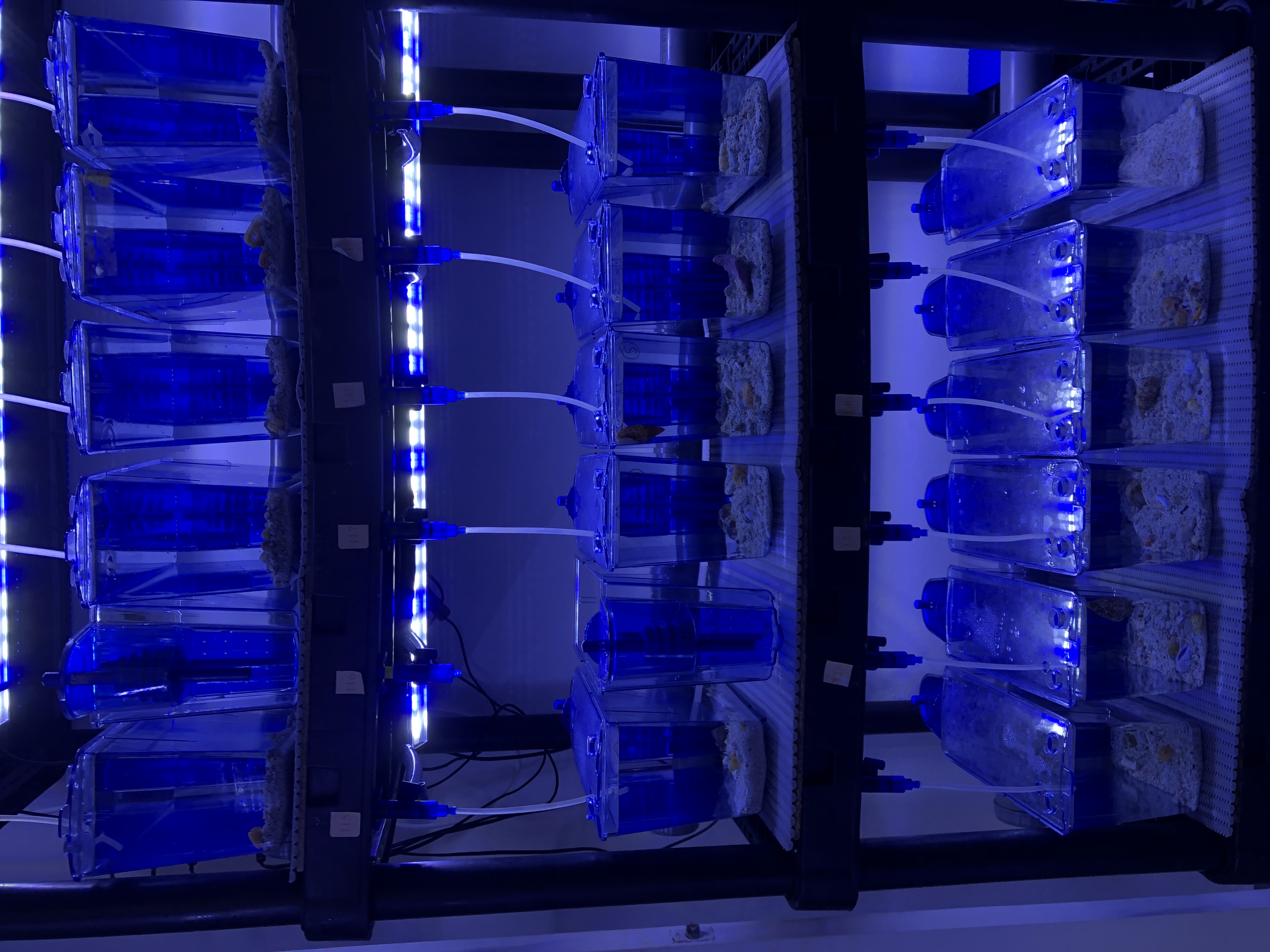UNIVERSITY OF MICHIGAN MUSEUM OF ZOOLOGY
Home > Research > PolyCone Project > Huahine Fieldwork
September 2022 - Fieldwork in Huahine, Society Islands
[English version/Tahitian version/French version]
In September 2022, Diana Vergara and Tom Duda performed fieldwork in Huahine to document the occurrence of cone snail species in nearshore habitats and collect feces, tissue clips, and egg capsules. DNA sequences will be obtained from samples to identify prey items, confirm field identifications and evaluate the presence of cryptic species, and determine which species are reproducing during the time of collection.


While enroute to Huahine, Diana and Tom met with Tamatoa Bambridge, Serge Planes, and Tiphanie François at CRIOBE in Mo'orea where they discussed progress and plans for the PolyCone Project and toured the cone snail rearing facilities (as shown in the photo above).
The fieldwork primarily took place in a relatively large inner reef area in northwestern Huahine Nui (just to the northwest of the main town of Fare; click here to see this area on Google Maps), a view of which can be seen in the photo above. An area on the east side of Huahine Nui was also surveyed (just to the southeast of Maeva; click here to see this area on Google Maps). Both sites included a variety of microhabitats and appeared to contain a similar assemblage of cone snail species. Given the similar assemblages, Diana and Tom concentrated their work efforts at the primary site near Fare.
Diana and Tom collected Cone snail specimens from the field and then measured them and placed individual snails in cups with seawater. Each cup also included a small label to keep track of individual specimens. The photo above shows individuals of Conus pulicarius (left), Conus eburneus (middle), and Conus coronatus (right) as they were being maintained in cups. The first two species were quite common in shallow water sandy areas and easy to find at night while they were out feeding or while their trails in the sand were still visible.
Snails were kept in cups for several days before being returned to the field so that feces could be collected from individuals that defecated. Approximately 15-20% of the individuals provided feces (presumably because they had eaten recently and still had food remains in their gut when collected).
In addition to measuring specimens, Diana and Tom also photodocumented them. The photo above shows the on-site photography set up. Photographs of individual specimens were taken because only five individuals per species were sacrificed to serve as voucher specimens. All other specimens were returned to their site of collection. The photographs thus provide documentation of specimens for which feces or tissues were collected and can be examined in case cryptic species are identified.
Diana and Tom removed small pieces of feet from a subset of specimens of each species before they were returned to the field. This method of tissue removal is non-lethal and the snails resume normal activities after donating a piece of their foot. DNA will be extracted from these foot tissues and used to evaluate the presence of cryptic species and confirm field identifications.
The photo above features several cone snail species that were collected at the primary study site, including three specimens of Conus imperialis and one specimen of Conus textile.
In total, Diana and Tom collected and measured nearly 1000 cone snail specimens that represent 22 species. They obtained nearly 200 feces samples and approximately 200 tissue samples from these specimens and brought them back to the lab at UM for DNA analyses. Four batches of egg capsules that appear to have been produced by Conus miliaris and Conus sanguinolentus were also collected, although DNA sequencing will be necessary to confirm which cone snail species produced them and microscopic examination of embryos will be needed to determine their state of development. Conus pulicarius, the flea-bitten or salt and pepper cone, as shown in photo above, was the most abundant species recorded at the primary field site.
Māuruuru roa to all of those who helped make this work possible including Huahine Mayor Marcelin Lisan and members of the Huahine City Council as well as Malissa Itchner and Nelson Tepa for facilitating a presentation about the PolyCone project at a City Council meeting; Christophe Brocherieux from the Direction de l'environnement de la Polynésie Française; Tamatoa Bambridge, Serge Planes, and Tiphanie François from CRIOBE; Ben Hess and Taehwan Lee from UM; and Em & Rande, Isabelle, Didier, MJ, and all the other new friends whom were met during the work.
Back to top of page